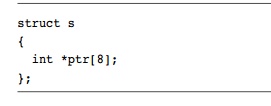Chapter: Multicore Application Programming For Windows, Linux, and Oracle Solaris : Hardware, Processes, and Threads
The Performance of 32-Bit versus 64-Bit Code
The
Performance of 32-Bit versus 64-Bit Code
A 64-bit
processor can, theoretically, address up to 16 exabytes (EB), which is 4GB squared,
of physical memory. In contrast, a 32-bit processor can address a maximum of
4GB of memory. Some applications find only being able to address 4GB of memory
to be a limitation—a particular example is databases that can easily exceed 4GB
in size. Hence, a change to 64-bit addresses enables the manipulation of much
larger data sets.
The
64-bit instruction set extensions for the x86 processor are referred to as
AMD64, EMT64, x86-64, or just x64. Not only did these increase the memory that
the processor could address, but they also improved performance by eliminating
or reducing two problems.
The first
issue addressed is the stack-based calling convention. This convention leads to
the code using lots of store and load instructions to pass parameters into functions.
In 32-bit code when a function is called, all the parameters to that function
needed to be stored onto the stack. The first action that the function takes is
to load those parameters back off the stack and into registers. In 64-bit code,
the parameters are kept in registers, avoiding all the load and store
operations.
We can
see this when the earlier code is compiled to use the 64-bit x86 instruction
set, as is shown in Listing 1.4.
Listing 1.4 64-Bit x86 Assembly Code to Increment a Variable at
an Address

In this
example, we are down to two instructions, as opposed to the three instructions
used in Listing 1.3. The two instructions are the increment instruction that
adds 1 to the value pointed to by the register %rdi and the return instruction.
The
second issue addressed by the 64-bit transition was increasing the number of
general-purpose registers from about 6 in 32-bit code to about 14 in 64-bit
code. Increasing the number of registers reduces the number of register spills
and fills.
Because
of these two changes, it is very tempting to view the change to 64-bit code as
a performance gain. However, this is not strictly true. The changes to the
number of registers and the calling convention occurred at the same time as the
transition to 64-bit but could have occurred without this particular
transition—they could have been intro-duced on the 32-bit x86 processor. The
change to 64-bit was an opportunity to reevalu-ate the architecture and to make
these fundamental improvements.
The
actual change to a 64-bit address space is a performance loss. Pointers change
from being a 4-byte structure into an 8-byte structure. In Unix-like operating
systems, long-type variables also go from 4 to 8 bytes. When the size of a
variable increases, the memory footprint of the application increases, and
consequently performance decreases. For example, consider the C data structure
shown in Listing 1.5.
Listing 1.5 Data Structure Containing an Array of
Pointers to Integers

When compiled
for 32-bits, the structure occupies 8 ∗ 4 bytes
= 32 bytes. So, every 64-byte cache line can contain two structures. When
compiled for 64-bit addresses, the pointers double in size, so the structure
takes 64 bytes. So when compiled for 64-bit, a single structure completely
fills a single cache line.
Imagine
an array of these structures in a 32-bit version of an application; when one of
these structures is fetched from memory, the next would also be fetched. In a
64-bit version of the same code, only a single structure would be fetched.
Another way of look-ing at this is that for the same computation, the 64-bit
version requires that up to twice the data needs to be fetched from memory. For
some applications, this increase in mem-ory footprint can lead to a measurable
drop in application performance. However, on x86, most applications will see a
net performance gain from the other improvements. Some compilers can produce
binaries that use the EMT64 instruction set extensions and ABI but that
restrict the application to a 32-bit address space. This provides the
perform-ance gains from the instruction set improvements without incurring the
performance loss from the increased memory footprint.
It is
worth quickly contrasting this situation with that of the SPARC processor. The
SPARC processor will also see the performance loss from the increase in size of
pointers and longs. The SPARC calling convention for 32-bit code was to pass
values in registers, and there were already a large number of registers
available. Hence, codes compiled for SPARC processors usually see a small
decrease in performance because of the memory footprint.
Related Topics